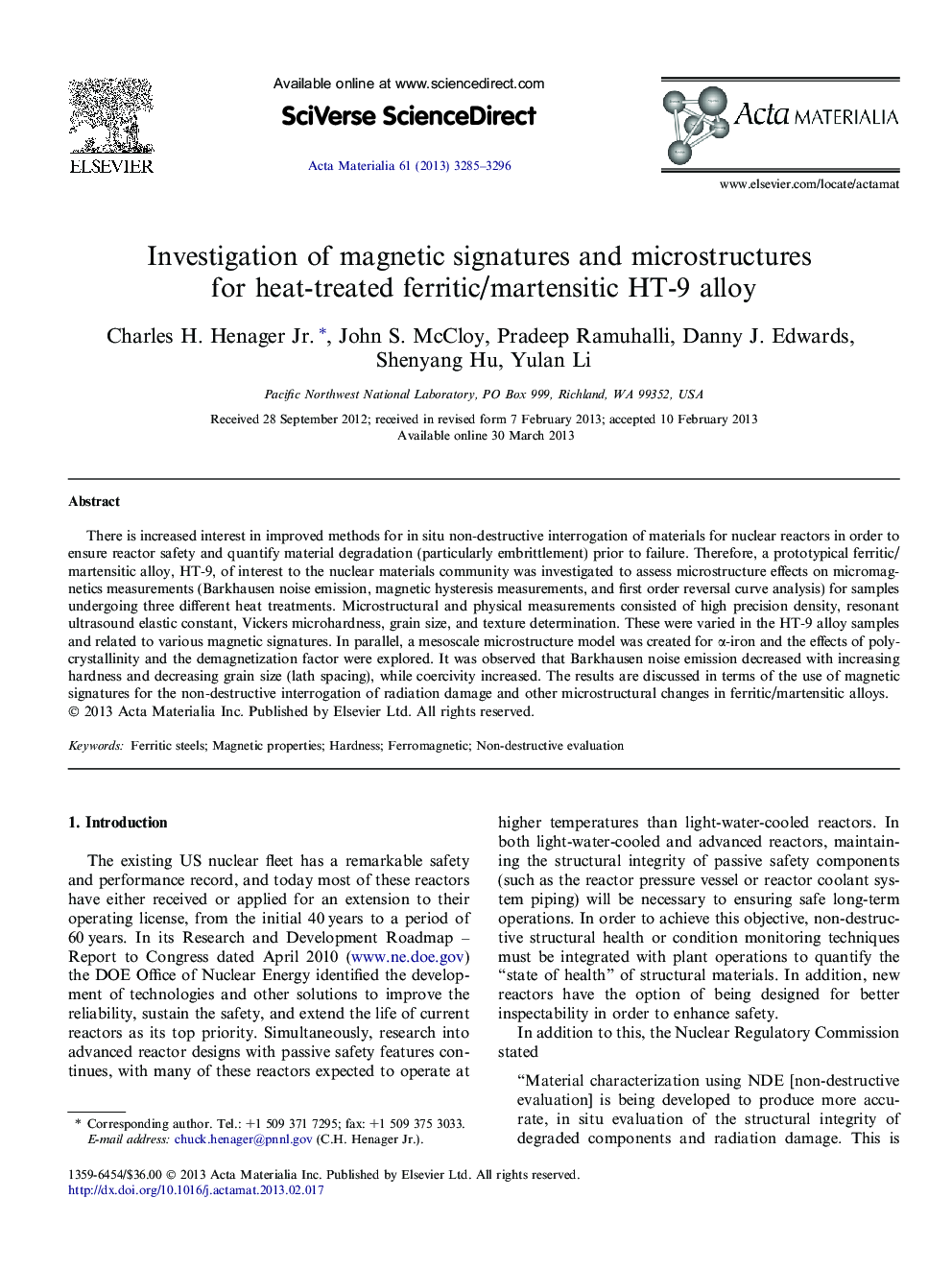| Article ID | Journal | Published Year | Pages | File Type |
|---|---|---|---|---|
| 1446389 | Acta Materialia | 2013 | 12 Pages |
There is increased interest in improved methods for in situ non-destructive interrogation of materials for nuclear reactors in order to ensure reactor safety and quantify material degradation (particularly embrittlement) prior to failure. Therefore, a prototypical ferritic/martensitic alloy, HT-9, of interest to the nuclear materials community was investigated to assess microstructure effects on micromagnetics measurements (Barkhausen noise emission, magnetic hysteresis measurements, and first order reversal curve analysis) for samples undergoing three different heat treatments. Microstructural and physical measurements consisted of high precision density, resonant ultrasound elastic constant, Vickers microhardness, grain size, and texture determination. These were varied in the HT-9 alloy samples and related to various magnetic signatures. In parallel, a mesoscale microstructure model was created for α-iron and the effects of polycrystallinity and the demagnetization factor were explored. It was observed that Barkhausen noise emission decreased with increasing hardness and decreasing grain size (lath spacing), while coercivity increased. The results are discussed in terms of the use of magnetic signatures for the non-destructive interrogation of radiation damage and other microstructural changes in ferritic/martensitic alloys.
